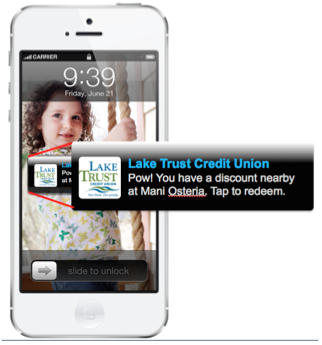Beware of loyalty programs that don’t benefit your members (or your credit union)

Ask These Eight Questions When Evaluating Member Discount Platforms
Loyalty programs for credit unions and their members have been around for decades. In recent years, instant cash-back discount programs have gained in popularity over traditional rewards cards or points accrual programs. But alas, all discount programs are not created equal! Here are eight questions to ask when evaluating merchant-funded discount schemes for your credit union:
- Is there a cost to your members? Do your members have to pay to participate in the program? If so, how much does the out-of-pocket cost offset their actual savings? Just as important, do you want your employees to be selling yet another product to your members? Most employees are not trained as sales people, and many members are turned off by sales solicitations. Instead, they want to receive added value, and in return, they’ll give you their trust and more of their business.
- What is required of your members to actually get discounts? Some discount programs require users to go into their accounts to activate offers *before they shop.* Programs may also require users to register a credit or debit card prior to receiving discounts. How many of your members would remember to login to their account BEFORE they visit a car dealer, sign up for a new gym, or go out to dinner? Would you?! This is not typical consumer behavior, so adoption and usage of these types of programs is low. Every hurdle you put in place will have a detrimental effect on traction and usage. Look for a discount program that doesn’t require any “behavior modification” on the part of your members.
- Does the program have a strong mobile presence? If you hope to deliver meaningful discounts to your users, you have to “go where they go,” which means you have to deliver those discounts through a mobile platform. Many programs have no mobile presence at all, or discounts are integrated into mobile banking apps. Evidence shows that stand-alone discount shopping apps have 70-80% market penetration, while mobile banking apps have only 30% penetration. So if you make people login to their mobile banking app to receive discounts, usage of the program could be limited.
- Will the platform send reminders to users at the right time and place? The old days of offering discounts and simply hoping that people will see them are over. Consumers are drowning daily in a sea of perks, discounts, coupons, and promotions. How will your discounts rise above the noise, and how will your members remember to use them at the right time and place? Discount programs that send location-based alerts to your members when they are near merchant discounts have much higher usage rates. In fact, research commissioned by Google shows that 81% of consumers respond to marketing messages they receive in sight of a retailer and 79% of those who read those alerts actually make a purchase.

- Who are the participating merchants? Are they local businesses? Are they your business members? There are innumerable discount and rewards programs that feature offers from national merchants, and while those deals may be of interest to your members, they are only part of the possible mix of participating merchants. Why not also offer deals and incentives from local merchants? This helps members shop local (which many prefer) and keeps money within your community. Moreover, if your CU has commercial members, then your discount program could feature deals with those businesses – and you could even tout that as a benefit for new commercial members.
- Who negotiates with participating merchants? When choosing a discount platform, ask if the vendor will find and negotiate deals with merchants. If the answer is anything less than a firm “yes,” (and we recommend you double- and triple-check this!) then that means your credit union will be responsible for that task, and it’s probably safe to say that your staff does not have the time or knowhow to track down businesses to participate in a discount program. Look for a vendor who will do all the work for you, and present you with a list of possible participants for your approval.
- How do the discounts reinforce our CU’s brand? Helping your members save money is great for boosting loyalty, right? But only if they know that the discount is coming from you! Some loyalty programs provide discounts to members by simply rebating members’ accounts as they shop. Those discounts just appear magically in their account, with little or no point-of-sale attribution to the credit union.Look for a discount platform that delivers mobile, point-of-sale savings acknowledgments (e.g. “Bravo! You just saved $15.50), and that showcases your brand throughout. This is called a “white label” platform which means the entire platform is branded with your credit union’s name, logo, color scheme, imagery, and messaging. Each message your members receive will be “stamped” with your credit union’s name and logo. For example, a branded mobile alert might say, “Get 20% off at Zingerman’s Deli, compliments of Main Street Credit Union.” In this way, your members are reminded throughout their daily routines that your credit union is helping them save money, and that boosts member loyalty, and improves long-term wallet share too.
- Does the program require your members to pay with their CU credit/debit card? Another major benefit of discount programs is that you can tie the discounts to payment with a specific card – ideally, your credit union’s card. This drives card usage and interchange revenue, often quickly paying back the cost of the program. Ask vendors if users can redeem the discounts no matter what payment method they use. If you’re aiming for loyalty and wallet share, then payment method may not be your top priority. But if card revenue is your only goal, then you’ll want to see a clear requirement to use the “correct” payment method.
Finally, beware of free. There are many no-cost discount programs out there, and they all claim to offer loads of precious discounts that will get gobbled up by your users. Unfortunately, because most of these programs offer little or no marketing support, minimal technology, and mediocre discounts, only a very small percentage of users take advantage of these programs – but it’s usually just enough for the vendor to make money. Vendors of “free” programs often earn commissions when the discounts are used. If your goal is to add value to members, boost loyalty, and increase card swipes, then a free program will probably not do the job. While a free program is good for the vendor, it’s typically not beneficial to your members or your credit union.





